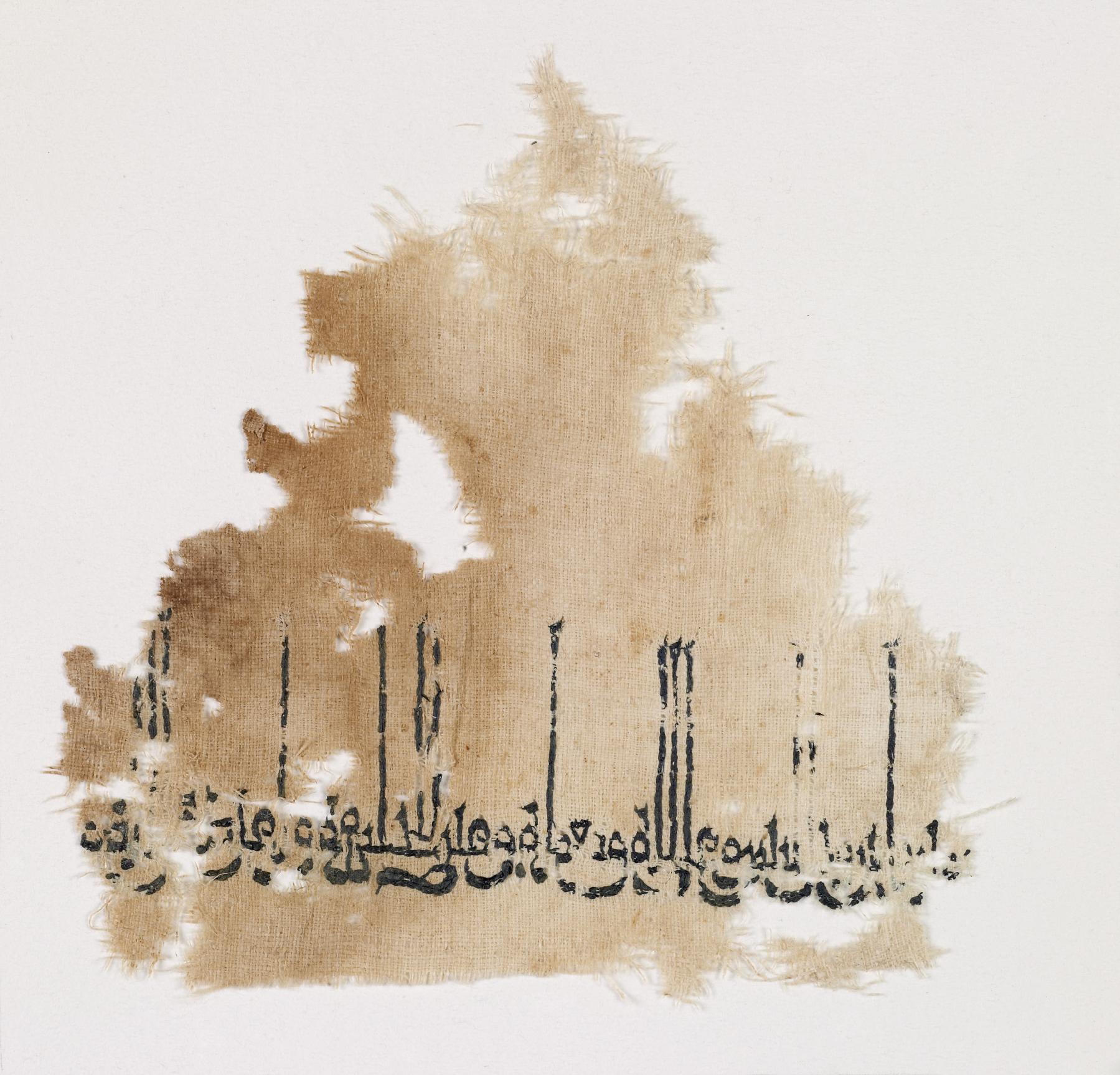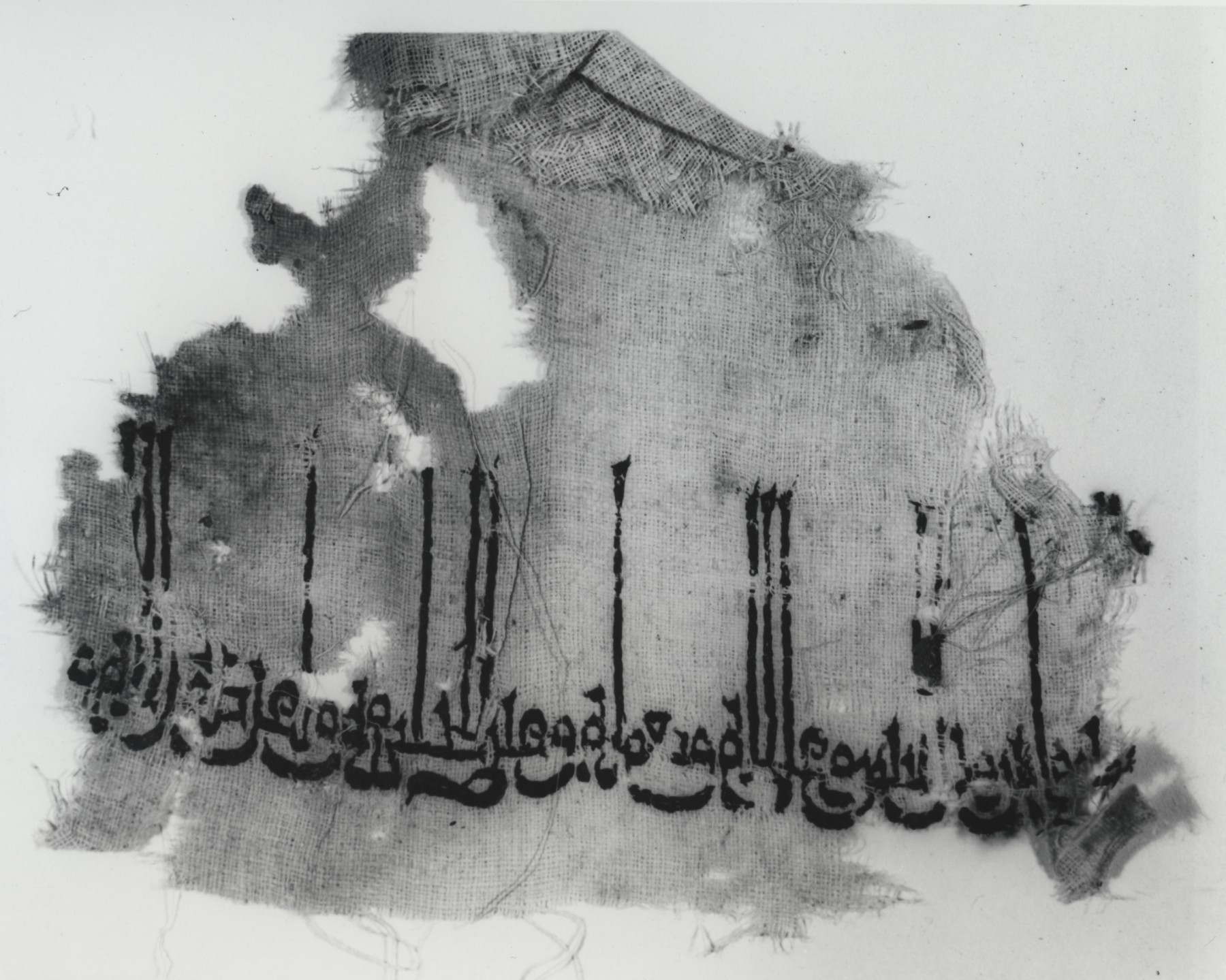Fragment of a Tiraz
This fragment of a garment was woven in an official factory and decorated with an Arabic inscription. Such honorific inscriptions on textiles are called "tiraz" in Arabic, and "taraziden" in Persian. They combine pious invocations to God, verses from the Qur'an, and sometimes names of caliphs. On this example appears the phrase ". . . of Allah, and favor and glory to the servant of Allah. . .," a formula used to introduce the name of a caliph, a ruler of the Abbasid dynasty.
Inscription
Provenance
Provenance (from the French provenir, 'to come from/forth') is the chronology of the ownership, custody, or location of a historical object. Learn more about provenance at the Walters.
Maurice Nahman, Cairo and Paris [date and mode of acquisition unknown]; Henry Walters, Baltimore, 1928, by purchase; Walters Art Museum, 1931, by bequest.
Exhibitions
| 2013-2014 | Threshold to the Sacred: The Ark Door of Cairo’s Ben Ezra Synagogue . The Walters Art Museum, Baltimore; Yeshiva University Museum, New York. |
Geographies
Egypt
(Place of Origin)
Iran (Place of Discovery)
Measurements
Overall: H: 4 15/16 × W: 4 7/8 × D: 1/16 in. (12.5 × 12.4 × 0.1 cm); Mounted, H: 13 7/16 × W: 12 5/16 × D: 11/16 in. (34.1 × 31.2 × 1.8 cm)
Credit Line
Acquired by Henry Walters, 1928
Location in Museum
Not on view
Accession Number
In libraries, galleries, museums, and archives, an accession number is a unique identifier assigned to each object in the collection.
In libraries, galleries, museums, and archives, an accession number is a unique identifier assigned to each object in the collection.
83.543




